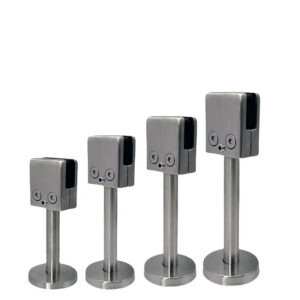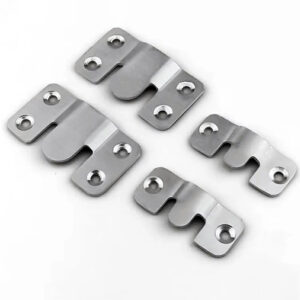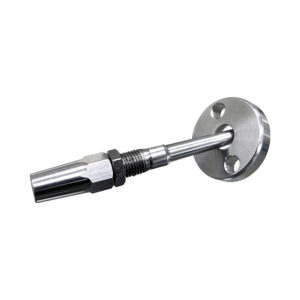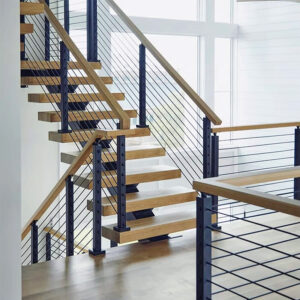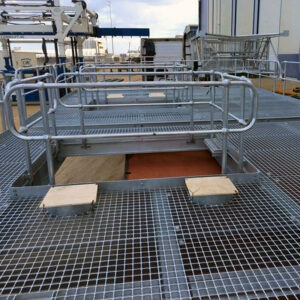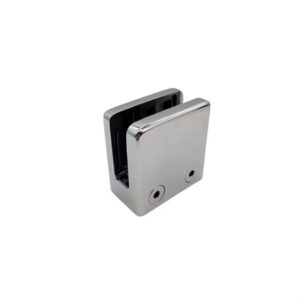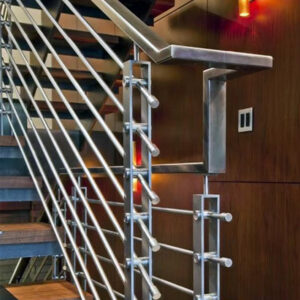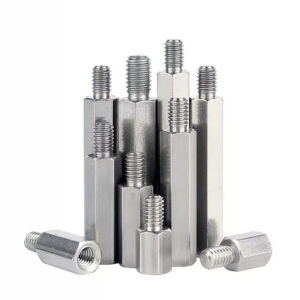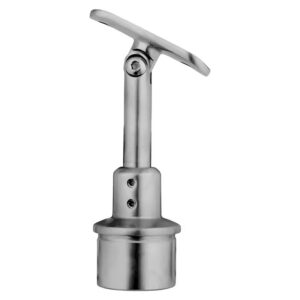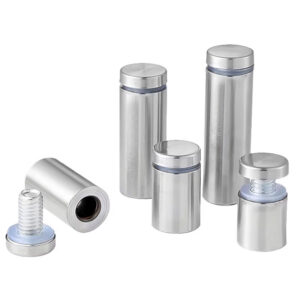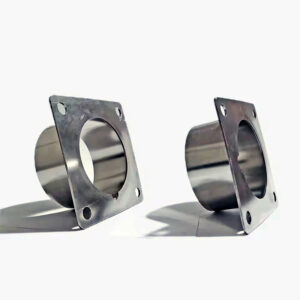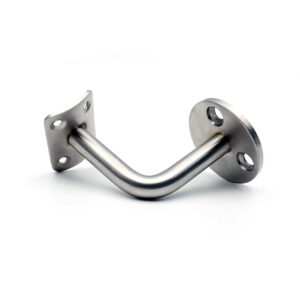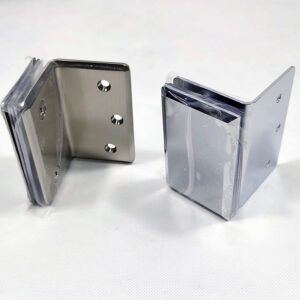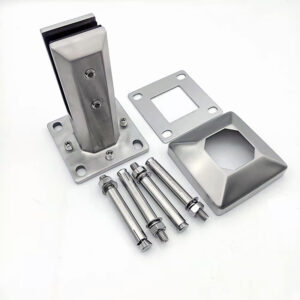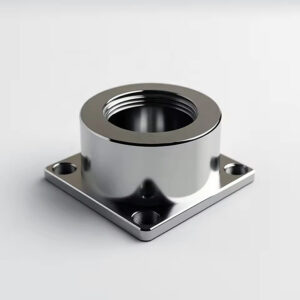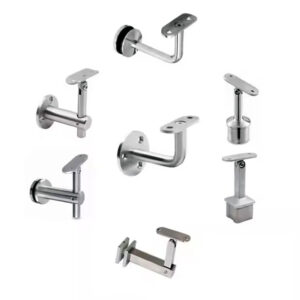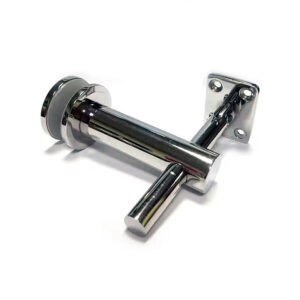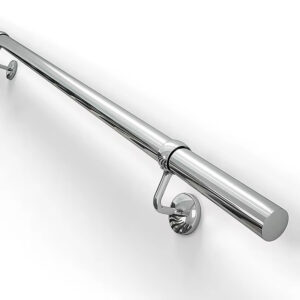After 23 years in stainless steel fabrication, we’ve learned that contractors don’t need another railing supplier—they need reliable project-specific hardware that actually works as promised. Standard components that fit together correctly, install efficiently, and perform long-term without maintenance headaches. Whether you’re handling residential multi-unit housing, commercial buildouts, or industrial infrastructure, the right hardware systems can cut installation time significantly while ensuring code compliance and durability.
Core Hardware Systems That Deliver Results
Handrail Systems for Every Application
Our project-specific hardware includes wall-mounted, post-mounted, surface, and continuous handrail systems designed for standardization across multiple job types. Wall brackets accommodate various mounting surfaces with adjustable positioning, while post-mounted systems integrate seamlessly with our railing components. Surface-mounted options work for retrofit projects where structural mounting isn’t feasible.
Key specifications:
- 304/316 stainless construction with brushed or mirror finish options
- Wall brackets support 200 lbs per linear foot (standard loading)
- Adjustable mounting accommodates 1/4″ variance in wall alignment
- Pre-drilled mounting patterns match standard stud spacing
Railing Posts & Structural Components
Commercial project-specific systems require posts that handle both structural loads and architectural requirements. Our post systems include round and square profiles from 1.5″ to 4″ diameter, with wall thicknesses engineered for specific applications. Base plates, top caps, and intermediate connectors create complete structural systems.
Surface treatment options include brushed 304 for interior applications and 316L for coastal or industrial environments. Post heights range from 32″ to 48″ with custom lengths available for unique applications.
Glass Railing Hardware Solutions
Precision project solutions for glass panel installations include structural glazing clamps, point-supported connectors, and base shoe systems. Our hardware accommodates glass thicknesses from 1/4″ to 3/4″ with proper structural support calculations.
Spigot systems for structural glass mounting include both rigid and flexible connections, depending on building movement requirements. All glass hardware includes proper gasket systems for weather sealing and thermal expansion accommodation.
Cable Railing Components
Custom project hardware components for cable systems include through-post fittings, surface-mounted tensioners, and intermediate supports. Our cable hardware maintains proper tension over time while accommodating thermal expansion and structural movement.
Cable systems work with 1/8″ to 3/16″ stainless cable, with tensioning hardware rated for 500+ lbs breaking strength. Quick-connect fittings reduce installation time while maintaining structural integrity.
Material Specifications and Performance Data
| Material Grade | Environment | Corrosion Resistance | Cost Factor | Typical Applications |
|---|---|---|---|---|
| 304 Stainless | Interior/Dry | Excellent | 1.0x | Office, retail, residential interior |
| 316 Stainless | Marine/Industrial | Superior | 1.3x | Coastal, chemical exposure, exterior |
| 316L Stainless | Welded Applications | Superior | 1.4x | Project-specific fabrication 316L requirements |
Load Capacity by Application
| Component Type | Residential (lbs/ft) | Commercial (lbs/ft) | Industrial (lbs/ft) | Code Reference |
|---|---|---|---|---|
| Handrail Systems | 200 | 250 | 300 | IBC 1607.8.1 |
| Guard Rails | 200 | 250 | 300 | IBC 1607.8.1 |
| Stair Rails | 200 | 250 | 300 | IBC 1014.8 |
| Cable Systems | 200 | 250 | 300 | IBC 1607.8.1 |
“Standardized railing components can reduce installation time by up to 35% compared to field-fabricated systems.” —Construction Industry Institute
Real Project Applications and Results
Residential Multi-Unit Housing
ODM project hardware manufacturing for residential developers requires cost-effective standardization without compromising safety or aesthetics. Our modular systems work across different unit layouts while maintaining consistent appearance and performance.
Recent multi-unit projects using our standardized systems showed:
- 40% reduction in installation time vs. custom fabrication
- 25% lower material costs through volume standardization
- Consistent code compliance across all units
- Simplified inspection process with pre-certified components
Commercial Office and Retail
Commercial applications demand project-specific hardware that balances architectural requirements with maintenance efficiency. Our systems accommodate open floor plans, multi-level installations, and high-traffic environments while maintaining professional appearance.
Office building installations typically see:
- 2-3 day installation for standard floor layouts
- Minimal disruption to occupied spaces
- Long-term performance without maintenance requirements
- Easy modification for tenant improvements
Industrial and Manufacturing Facilities
Industrial custom project hardware components must withstand harsh environments while providing reliable safety performance. Our 316 stainless systems handle chemical exposure, temperature variations, and heavy use conditions.
Manufacturing facility projects demonstrate:
- 15+ year service life in chemical processing environments
- Minimal maintenance requirements reducing operational costs
- Compliance with OSHA safety standards
- Easy cleaning and sanitization for food processing applications
Marine and Coastal Applications
Coastal environments demand precision project solutions using 316 stainless materials with proper surface treatments. Our marine-grade systems resist salt spray corrosion while maintaining structural integrity.
Coastal project experience includes:
- 10+ year warranties in direct salt spray environments
- Minimal surface degradation with proper material selection
- Structural performance maintained despite thermal cycling
- Easy maintenance with standard cleaning procedures
Installation Efficiency and Technical Support
Modular Installation Approach
Our project-specific hardware uses standardized connections and pre-fabricated components to minimize field assembly time. Posts arrive pre-drilled, brackets include all necessary hardware, and components fit together with standard tools.
Installation timeline estimates:
- Linear handrail: 20-30 feet per day per installer
- Post and rail systems: 15-25 feet per day per installer
- Glass panel systems: 10-15 panels per day per crew
- Cable railing: 25-35 feet per day per installer
Quality Control and Precision Manufacturing
Twenty-three years of manufacturing experience ensures project-specific fabrication 316L and 304 components meet dimensional tolerances for reliable field assembly. Our quality systems include material certification, dimensional inspection, and surface finish verification.
Manufacturing precision includes:
- +/- 1/16″ dimensional tolerance on critical connections
- Material certification for all stainless steel components
- Surface finish consistency across production batches
- Pre-assembly testing for complex connection systems
Technical Support and Design Assistance
Our engineering team provides technical support throughout project development, from initial material selection through installation troubleshooting. With 23 years of field experience, we understand real-world installation challenges and provide practical solutions.
Support services include:
- Load calculation verification for specific applications
- Material selection guidance based on environment
- Installation sequence planning for complex projects
- Field troubleshooting and modification support
Installation Timeline and Cost Analysis
| Project Type | Linear Footage | Installation Days | Crew Size | Cost Factor |
|---|---|---|---|---|
| Residential Stairs | 50-100 ft | 2-3 days | 2 installers | 1.0x |
| Commercial Handrail | 200-500 ft | 5-8 days | 2-3 installers | 1.2x |
| Glass Panel Systems | 100-200 ft | 7-10 days | 3-4 installers | 1.5x |
| Industrial Platforms | 300-600 ft | 10-15 days | 3-4 installers | 1.3x |
Frequently Asked Questions
How do I select between 304 and 316 stainless for my project?
304 stainless works for most interior applications and dry exterior environments. Choose 316 for coastal areas (within 1 mile of saltwater), industrial facilities with chemical exposure, or any environment with chloride contamination. Project-specific fabrication 316L becomes necessary for welded assemblies in corrosive environments.
Are your components compatible across different product lines?
Yes, our project-specific hardware uses standardized connection methods across handrail, post, and mounting systems. This allows mixing components while maintaining structural integrity and consistent appearance.
What’s the typical lead time for standard vs. custom components?
Standard commercial project-specific systems ship within 2-3 weeks. Custom modifications to standard components add 1-2 weeks. Completely custom ODM project hardware manufacturing requires 4-6 weeks depending on complexity.
How do your systems handle building movement and thermal expansion?
Our precision project solutions include expansion joints and flexible connections for long runs. Standard practice includes expansion accommodation every 40 feet for exterior installations, with specific details based on local temperature ranges.
What installation support do you provide?
We provide installation guidelines, connection details, and technical support throughout installation. Our 23 years of experience means we understand common field challenges and can provide practical solutions quickly.
How do maintenance requirements compare between material grades?
Both 304 and 316 stainless require minimal maintenance—typically annual cleaning with mild detergent. 316 stainless maintains appearance longer in harsh environments, potentially extending periods between maintenance cycles.
System Integration and Compatibility
Our custom project hardware components integrate with architectural requirements while maintaining practical installation methods. Esang Metal has developed these systems through 23 years of real project experience, understanding how components must work together for long-term reliability.
“Modular railing systems reduce project complexity while maintaining code compliance across diverse applications.” —National Association of Building Hardware Manufacturers
The key to successful project-specific hardware implementation lies in understanding both structural requirements and installation realities. Our systems provide the reliability contractors need with the flexibility architects require, backed by proven performance in thousands of installations.
Standard components, reliable performance, practical installation—that’s what 23 years in the business has taught us matters most to the professionals who count on our systems every day.
